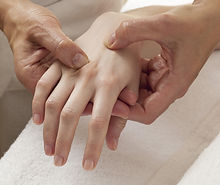Michael's Clinic
941.666.1942
Frequently Asked Questions


What diseases is acupuncture effective against?
Acupuncture and the rest of the tools I use in my clinic used to treat all physical and mental ailment people had for thousands of years. Therefore a list of all possible conditions I may deal with is infinite.
Goes without saying that often the tools modern science provide our medical doctors are superior to the tools at my disposal. When they are, I am the first one to refer my patients to use them. However often I can help in places where either western medicine is found lacking, or where the use of western medicine requires either procedures or the use of medications that have side effects traditional medicine can avoid.
There are also conditions which Western medicine do not consider a treatable problem where the services of acupuncture are useful: sleep issues, pain that does not stem from a specific disease, continuous immune issues, mental and physical imbalances, painful periods, menopause symptoms etc.
Does acupuncture hurt?
Though there are some acupuncture styles that may use more dramatic needling techniques that may definitely cause some pain, the type of acupuncture I use in the clinic uses particularly superficial needling technique that is even more gentle than standard TCM needling.
Furthermore, the style of acupuncture I use prefers needling distal points- points that are far from the source of pain rather than needling sensitive points.
This style of acupuncture uses extensively a technique called direct moxa or rice moxa, which provides the needle with further stimulation. Most people find this sensation pleasurable, but some report it as a minor annoyance.
How should I prepare myself for my acupuncture session?
The following are helpful tips, but they are not must-do items:
Try and avoid arriving the clinic in a rush. This will allow you to gain more out of your session.
Do not come hungry to the session, but do not come right after a big meal either. The best is to come about an hour after a modest meal
Make sure you drink at least one glass of water before your session, and another one thereafter.
Allocate resting time after your session. If not otherwise told, resting an hour after your session will maximize the effect of the treatment.
Pay special attention to our dress recommendation. Dressing according to these recommendations will allow you to feel more relaxed and make your treatment session more efficient.
What form of payments are accepted in the clinic?
Either cash or credit cards.
How should I dress for my acupuncture session?
Most acupuncture points are either in below the knees or below the elbows. We often need to expose the belly and almost certainly will expose the back. Therefore it is best to come in a shirt and pants (rather than a dress) and with pants that can be easily raised above the knee. Furthermore, when we use rice moxa , we use a red oily cream that may stain your outfit. Therefore many people prefer to slip into a set of casual clothes for the sessions and change back afterwards.
Do I need to undress when I receive a Shiatsu treatment?
No. Shiatsu is performed through clothing. Therefore, for sessions involving Shiatsu, it is best to come in comfortable loose fitting clothes.
What is Japanese acupuncture?
There are different acupuncture styles originating from Japan. The style typically referred to in America as “Japanese Acupuncture”, among professionals, is referred to as Kiiko Matsumoto Style (KMS). It gained its prominence in the west due the pioneering work of Kiiko Matsumoto who synthesized the knowledge and experience of a few formidable acupuncturists with whom she studied and worked in Japan. These masters were some of the most respected names in Japan.
Unlike classic Chinese medicine (TCM), most of the Japanese Masters were modern day MDs, so they tend to explain things in a similar way to conventional doctors.
While Chinese doctors may use metaphors such as “Stagnation of Qi of the Conception vessel meridian” to explain what they are doing, a Japanese practitioner will talk about “adrenal exhaustion” or “Lymphatic congestion”, terms that were coined by western medical doctors.
For more information read our blog post "Japanese vs. Chinese Acupuncture"
What are the practical differences between classic acupuncture (TCM) and the KMS?
There are many major differences between the KMS style and the more popular TCM style.
It is important to note that all KMS acupuncturists are versed in the TCM style, since in the US only licensed TCM acupuncturists are licensed to practice KMS.
Perhaps the most obvious difference between the two styles is that KMS is an empirical method: A classic TCM session starts with data collection (anamnesis, tongue and pulse diagnosis), culminating with a diagnosis which is then translated into a treatment. In KMS, on the other hand, the treatment evolves based on the interaction that takes place in the clinic from one moment to the next. Before and after the insertion of each needle the patient is tested for change, so a simple “before and after” dialog guides the acupuncturist and the patient with every needle inserted.
There are also big differences in the needling techniques used in Japanese acupuncture. Japanese style of acupuncture inserts the needles more superficially, and more often than not add direct moxa to most acupuncture points.